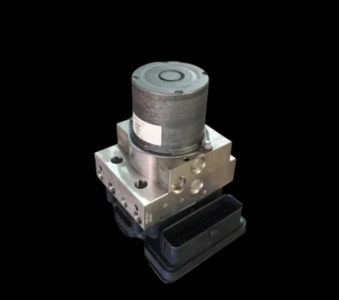ABS Module – The Core of Safer Braking
Modern vehicles are equipped with an array of advanced systems designed to make driving safer, smoother, and more efficient. Among these, the ABS module plays a crucial role in preventing one of the most dangerous situations a driver can face—loss of control during hard braking. Often unseen and rarely thought about until there’s a problem, the ABS module is the brains of the Anti-lock Braking System, constantly working in the background to keep drivers safe.
Understanding the ABS Module
The ABS module is an electronic control unit that works closely with wheel speed sensors, hydraulic valves, and the brake system to ensure that braking is both effective and safe. Its job is to monitor each wheel’s rotation speed and prevent them from locking up during sudden or forceful braking.
When a wheel locks, it stops rotating while the vehicle is still in motion, leading to a loss of traction. This can cause skidding, which not only lengthens stopping distance but also makes it much harder to steer around obstacles. The ABS module ensures that braking pressure is modulated rapidly to keep the wheels moving just enough to maintain grip on the road.
How It Works
The ABS module operates in milliseconds, performing actions far faster than human reflexes could manage. Here’s how it functions in an emergency braking scenario:
- Detection – Wheel speed sensors feed data to the ABS module. If one or more wheels begin to decelerate much faster than the others, the module detects a lock-up risk.
- Decision – The module calculates how to reduce brake pressure on that wheel to restore traction.
- Action – Hydraulic valves are adjusted to release and reapply brake pressure rapidly.
- Repeat – This process happens many times per second until the risk is gone.
To the driver, this rapid pulsing might be felt in the brake pedal during hard stops—a sign the system is doing its job.
Benefits of the ABS Module
The advantages of having a functional ABS module go far beyond avoiding skids:
- Enhanced Steering Control – Unlike traditional braking where locked wheels make steering nearly impossible, ABS allows the driver to steer around hazards even while braking hard.
- Shorter Stopping Distances – On wet or slippery roads, the ABS module can reduce braking distances compared to conventional brakes.
- Improved Stability – Prevents the car from spinning out due to uneven wheel braking.
- Integration with Other Safety Systems – Works alongside traction control and electronic stability control to deliver a comprehensive safety net.
Signs of ABS Module Problems
Since the ABS module is such a critical safety component, it’s important to recognise signs of trouble early. Common indicators include:
- ABS Warning Light – The most obvious sign, indicating the system has detected a fault.
- Brakes Locking During Stops – A clear sign the ABS is not functioning properly.
- Inconsistent Brake Pedal Feel – Pedal may feel unusually stiff or soft.
- Loss of Stability on Slippery Surfaces – Vehicle skids more easily during braking.
Common Causes of ABS Module Failure
Several issues can lead to ABS module malfunction:
- Corrosion – Moisture in brake fluid can corrode internal parts of the module.
- Sensor Problems – Faulty or dirty wheel speed sensors can send incorrect data.
- Electrical Faults – Damaged wiring or blown fuses can interrupt communication.
- Hydraulic Issues – Blockages or leaks in the brake fluid pathways can impair operation.
Maintaining the ABS Module
While the ABS module is built to last, proper care can extend its lifespan:
- Brake Fluid Maintenance – Replace fluid at recommended intervals to prevent contamination.
- Regular Inspections – Have the braking system checked during routine servicing.
- Keep Sensors Clean – Dirt and debris on wheel speed sensors can impair accuracy.
- Prompt Repairs – Address any warning lights or unusual braking behaviour immediately.
Real-World Example: ABS in Action
Imagine driving on a rainy evening. You’re cruising at a safe speed when suddenly a car in front of you brakes hard. You react instantly, slamming your foot on the brake pedal.
Without an ABS module, your front wheels might lock, causing your car to skid straight ahead, unable to steer around the vehicle in front. But with ABS, the module detects the lock-up risk, reduces brake pressure just enough to restore grip, then reapplies it—repeating the cycle in rapid bursts. This allows you to slow down while still being able to steer into the open lane beside you, avoiding a collision entirely.
In moments like these, the ABS module works quietly in the background, processing information and making micro-adjustments faster than you could ever react.
The Quiet Safety Net
For most drivers, the ABS module is out of sight and out of mind. But during a critical braking situation, it can mean the difference between a close call and a serious accident. It doesn’t just stop wheels from locking—it preserves control, stability, and safety in moments when every fraction of a second matters.






